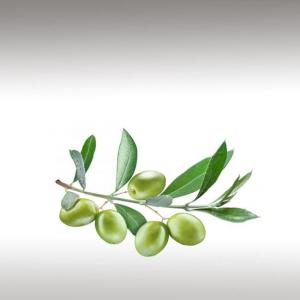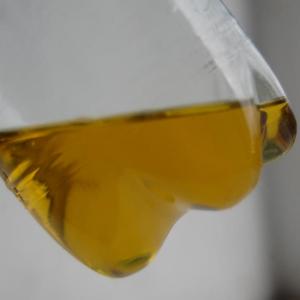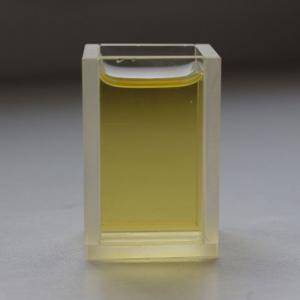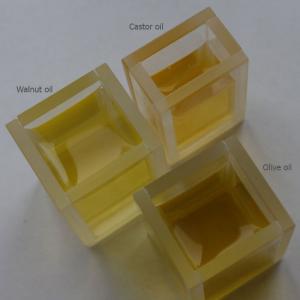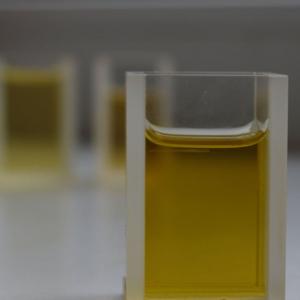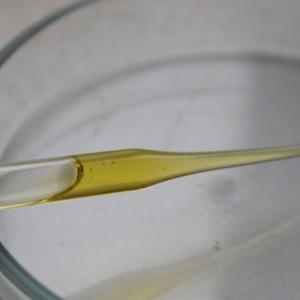
OLIVE OIL (OLEA EUROPAEA) - BASE OILS

BASE / GENERAL DATA
Information submited: March 11, 2014 Modified: May 9, 2018 By: OperaDreamhouse
Olive oil is a fat obtained from the Olive (the fruit of Olea Europaea, family Oleaceae), a traditional tree crop of the Mediterranean Basin. The tree grows to 9 metres tall and takes 15 years to bear fruit.
Its fruit, also called the Olive, is of major agricultural importance in the Mediterranean region as the source of Olive oil. The tree and its fruit give its name to the plant family, which also includes species such as Lilacs, Jasmine, Forsythia and the true ash trees (Fraxinus).
The Olive (Olea Europaea) is a species of small tree in the family Oleaceae, native to the coastal areas of the eastern Mediterranean Basin as well as the Levant, northern Saudi Arabia, orthern Iraq, andnorthern Iran at the south of the Caspian Sea.
The oil is produced by pressing whole Olives. It is not clear when and where Olive trees were first domesticated. Archeological evidence shows that Olives were turned into oil by 4500 BC by Canaanites in present-day Israel.
It is commonly used in cooking, cosmetics, pharmaceuticals, and soaps and as a fuel for traditional oil lamps. Olive oil is used throughout the world, but especially in the Mediterranean countries and, in particular, in Spain, Italy and Greece, which has the highest consumption per person.
Olives ripen through the Autumn and into the Winter. As the oil content increases, the Olives change color from green to violet to nearly black. The green Olives are harvested first. Olives can be hand picked, gathered with a special wooden rake-like tool, or brought down by hitting the branches with long poles.
All production begins by transforming the Olive fruit into Olive pasteby crushing or pressing. This paste is then malaxed (slowly churned or mixed) to allow the microscopic oil droplets to agglomerate. The oil is then separated from the watery matter and fruit pulp with the use of a press (traditional method) or centrifugation (modern method). After extraction the remnant solid substance, called pomace, still contains a small quantity of oil.
Olive oil is classified by how it was produced, by its chemistry, and by panels that perform Olive oil taste testing.The International Olive Council (IOC) - an intergovernmental organization based in Madrid, Spain. This organization promotes Olive oil around the world by tracking production, defining quality standards, and monitoring authenticity.
"Virgin'" means the oil was produced by the use of mechanical means only, with no chemical treatment. Virgin Olive oil Comes from Virgin oil production only, but is of slightly lower quality and this oil must have a good taste.The "Term Virgin oil" with reference to production method includes both "Virgin" and "Extra-Virgin Olive oil" products, depending on quality.
"Extra-Virgin Olive oil" Comes from Virgin oil production only, and is of higher quality: among other things, it contains no more than 0,8% free acidity, and is judged to have a superior taste, having some fruitiness and no defined sensory defects (low free acidity, no or very littleorganoleptic defects).
Extra-Virgin Olive oil accounts for less than 10% of oil in many producing countries: the percentage is far higher in the Mediterranean countries (Greece: 80%, Italy: 65%, Spain: 30%).
Chemical structure:
Olive oil is composed mainly of the mixed triglyceride esters of oleic acid and palmitic acid and of other fatty acids, along with traces of Squalene (up to 0,7%) and Sterols (about 0,2% phytosterol and tocosterols).
The composition varies by cultivar, region, altitude, time of harvest, and extraction process.
Fatty acid - Percentage
Oleic acid - 55 to 83%
Linoleic acid - 3,5 to 21%
Palmitic acid - 7,5 to 20%
Stearic acid - 0,5 to 5%
α-Linolenic acid - 0 to 1,5%.
Its fruit, also called the Olive, is of major agricultural importance in the Mediterranean region as the source of Olive oil. The tree and its fruit give its name to the plant family, which also includes species such as Lilacs, Jasmine, Forsythia and the true ash trees (Fraxinus).
The Olive (Olea Europaea) is a species of small tree in the family Oleaceae, native to the coastal areas of the eastern Mediterranean Basin as well as the Levant, northern Saudi Arabia, orthern Iraq, andnorthern Iran at the south of the Caspian Sea.
The oil is produced by pressing whole Olives. It is not clear when and where Olive trees were first domesticated. Archeological evidence shows that Olives were turned into oil by 4500 BC by Canaanites in present-day Israel.
It is commonly used in cooking, cosmetics, pharmaceuticals, and soaps and as a fuel for traditional oil lamps. Olive oil is used throughout the world, but especially in the Mediterranean countries and, in particular, in Spain, Italy and Greece, which has the highest consumption per person.
Olives ripen through the Autumn and into the Winter. As the oil content increases, the Olives change color from green to violet to nearly black. The green Olives are harvested first. Olives can be hand picked, gathered with a special wooden rake-like tool, or brought down by hitting the branches with long poles.
All production begins by transforming the Olive fruit into Olive pasteby crushing or pressing. This paste is then malaxed (slowly churned or mixed) to allow the microscopic oil droplets to agglomerate. The oil is then separated from the watery matter and fruit pulp with the use of a press (traditional method) or centrifugation (modern method). After extraction the remnant solid substance, called pomace, still contains a small quantity of oil.
Olive oil is classified by how it was produced, by its chemistry, and by panels that perform Olive oil taste testing.The International Olive Council (IOC) - an intergovernmental organization based in Madrid, Spain. This organization promotes Olive oil around the world by tracking production, defining quality standards, and monitoring authenticity.
"Virgin'" means the oil was produced by the use of mechanical means only, with no chemical treatment. Virgin Olive oil Comes from Virgin oil production only, but is of slightly lower quality and this oil must have a good taste.The "Term Virgin oil" with reference to production method includes both "Virgin" and "Extra-Virgin Olive oil" products, depending on quality.
"Extra-Virgin Olive oil" Comes from Virgin oil production only, and is of higher quality: among other things, it contains no more than 0,8% free acidity, and is judged to have a superior taste, having some fruitiness and no defined sensory defects (low free acidity, no or very littleorganoleptic defects).
Extra-Virgin Olive oil accounts for less than 10% of oil in many producing countries: the percentage is far higher in the Mediterranean countries (Greece: 80%, Italy: 65%, Spain: 30%).
Chemical structure:
Olive oil is composed mainly of the mixed triglyceride esters of oleic acid and palmitic acid and of other fatty acids, along with traces of Squalene (up to 0,7%) and Sterols (about 0,2% phytosterol and tocosterols).
The composition varies by cultivar, region, altitude, time of harvest, and extraction process.
Fatty acid - Percentage
Oleic acid - 55 to 83%
Linoleic acid - 3,5 to 21%
Palmitic acid - 7,5 to 20%
Stearic acid - 0,5 to 5%
α-Linolenic acid - 0 to 1,5%.

SPIRITUAL PRACTISES DATA
Information submited: March 11, 2014 Modified: May 9, 2018 By: OperaDreamhouse
Olive oil has religious symbolism for healing and strength. The Minoans used Olive oil in religious ceremonies. The oil became a principal product of the Minoan civilization, where it is thought to have represented wealth.
Homer called the Olive oil "Liquid gold”.
Athens, the ancient city and today's capital of Greece, is named after the Goddess Athena, who brought the Olive to the Greeks as a gift. Zeus had promised to give Attica to the god or goddess who made the most useful invention. Athena's gift was Olive, useful for light, heat, food, medicine and perfume, and it was picked as a more peaceful invention than Poseidon's horse - touted as a rapid and powerful instrument of war.
Various religions ( Christianity, Islam, Judaism) still use Olive oil for rituals, in meditation and for authenticity lamps.
Eastern Orthodox Christians still use oil lamps in their churches, home prayer corners and in the cemeteries.
Homer called the Olive oil "Liquid gold”.
Athens, the ancient city and today's capital of Greece, is named after the Goddess Athena, who brought the Olive to the Greeks as a gift. Zeus had promised to give Attica to the god or goddess who made the most useful invention. Athena's gift was Olive, useful for light, heat, food, medicine and perfume, and it was picked as a more peaceful invention than Poseidon's horse - touted as a rapid and powerful instrument of war.
Various religions ( Christianity, Islam, Judaism) still use Olive oil for rituals, in meditation and for authenticity lamps.
Eastern Orthodox Christians still use oil lamps in their churches, home prayer corners and in the cemeteries.

MEDICINE / HEALTH DATA
Information submited: March 11, 2014 Modified: May 9, 2018 By: OperaDreamhouse
Hippocrates recommended Olive oil as "Lama" (medicine), nominating more than sixty different uses.
Preliminary clinical studies provide evidence that consumption of Olive oil may lower risk of heart disease risk factors such as lower blood cholesterol levels and reduced LDL cholesterol oxidation, and that it may also possibly influence inflammatory, thrombotic, hypertensive and vasodilatory mechanisms. Although epidemiological studies indicate that a higher proportion of monounsaturated fats in the diet may be linked with a reduction in the risk of coronary heart disease.
It has an anti-oxidant effect on the human body cells, stimulates bone growth and calcium absorption. It contains mono-unsaturated fat that helps to reduce bad cholesterol levels on your blood, help control high blood pressure and aid in the prevention of diabetes and some cancers, while it strengthens immune system.
In one study, monounsaturated fats such as from Olive oil benefited mood, decreased anger, and increased physical activity.
There has been relatively little scientific work done on the effect of Olive oil on acne and other skin conditions. However, one study noted that the abundance of Squalene in oils in general shows promise for sufferers of seborrheic dermatitis, acne, psoriasis, and atopic dermatitis. Squalene is used as an antioxidant, moisturizer, and as a convenient vehicle to carry other substances in topical application.
Another researcher reported that a mixture of Honey, Beeswax, and Olive oil alleviates diaper dermatitis, psoriasis, and eczema by inhibiting the growth of Staphylococcus aureus and Candida albicans.
Pilot studies showed that Olive oil may reduce oxidative damage to DNA and RNA, revealing a possible anti-carcinogenic factor. Consumption of Olive oil may prevent the onset of Alzheimer's disease, possibly through a mechanism related to oleocanthal inhibiting fibrillization of tau protein.
Limited and not conclusive scientific evidence suggests that eating about 2 tbsp. (23 g) of Olive oil daily may reduce the risk of coronary heart disease due to the monounsaturated fat in Olive oil.
During labour, the Vitamin E in the mother's blood is concentrated in the breast glands and so, during breast feeding, the mother continues to supply Vitamin E. It is essential to maintain the levels of this vitamin during breast feeding. The beneficial effect of oleic acid lasts beyond pregnancy. Besides its documented effectiveness in preventing hypercholesterolaemia and atherosclerosis, which is a process that can begin in childhood, oleic acid also appears to exert a positive influence on growth and bone mineralisation and development during infancy.
Side Effects:
The researchers conclude that they do not recommend the use of Olive oil for the treatment of dry skin and infant massage. Clinical trials have found that Olive oil does not act to prevent or reduce stretch marks.
Preliminary clinical studies provide evidence that consumption of Olive oil may lower risk of heart disease risk factors such as lower blood cholesterol levels and reduced LDL cholesterol oxidation, and that it may also possibly influence inflammatory, thrombotic, hypertensive and vasodilatory mechanisms. Although epidemiological studies indicate that a higher proportion of monounsaturated fats in the diet may be linked with a reduction in the risk of coronary heart disease.
It has an anti-oxidant effect on the human body cells, stimulates bone growth and calcium absorption. It contains mono-unsaturated fat that helps to reduce bad cholesterol levels on your blood, help control high blood pressure and aid in the prevention of diabetes and some cancers, while it strengthens immune system.
In one study, monounsaturated fats such as from Olive oil benefited mood, decreased anger, and increased physical activity.
There has been relatively little scientific work done on the effect of Olive oil on acne and other skin conditions. However, one study noted that the abundance of Squalene in oils in general shows promise for sufferers of seborrheic dermatitis, acne, psoriasis, and atopic dermatitis. Squalene is used as an antioxidant, moisturizer, and as a convenient vehicle to carry other substances in topical application.
Another researcher reported that a mixture of Honey, Beeswax, and Olive oil alleviates diaper dermatitis, psoriasis, and eczema by inhibiting the growth of Staphylococcus aureus and Candida albicans.
Pilot studies showed that Olive oil may reduce oxidative damage to DNA and RNA, revealing a possible anti-carcinogenic factor. Consumption of Olive oil may prevent the onset of Alzheimer's disease, possibly through a mechanism related to oleocanthal inhibiting fibrillization of tau protein.
Limited and not conclusive scientific evidence suggests that eating about 2 tbsp. (23 g) of Olive oil daily may reduce the risk of coronary heart disease due to the monounsaturated fat in Olive oil.
During labour, the Vitamin E in the mother's blood is concentrated in the breast glands and so, during breast feeding, the mother continues to supply Vitamin E. It is essential to maintain the levels of this vitamin during breast feeding. The beneficial effect of oleic acid lasts beyond pregnancy. Besides its documented effectiveness in preventing hypercholesterolaemia and atherosclerosis, which is a process that can begin in childhood, oleic acid also appears to exert a positive influence on growth and bone mineralisation and development during infancy.
Side Effects:
The researchers conclude that they do not recommend the use of Olive oil for the treatment of dry skin and infant massage. Clinical trials have found that Olive oil does not act to prevent or reduce stretch marks.

BEAUTY / COSMETICS DATA
Information submited: March 11, 2014 Modified: May 9, 2018 By: OperaDreamhouse
Olive oil is soothing and healing to all skin types
Olive oil has been indicated that the actual first uses of Olive oil were actually for the body and not for internal use. Olive oil has a long history of being used as a home remedy for skincare.
It is used as a natural moisturizer, for shampoos (treating dandruff and preventing hair loss) to create shiny hair and as conditioner, for oil massages, soaps for the body, to remove eye make up, to smooth out and minimize wrinkles, as rejuvenator of the skin, strengthens nails and cuticles, and for many other uses.
Olive oil has many antioxidant properties. Olive oil absorbs UV radiation and is very efficient in lowering metabolism rate of the body cells. Olive oil's antioxidants, including Vitamins E and A, can repair skin damage caused by weather and air pollution.
Olive oil can make skin appear firmer and smoother, while it reduces the appearance of fine lines and wrinkles. Olive oil can use as a daily moisturizer that will penetrate deep into the skin.
Olive oil has been indicated that the actual first uses of Olive oil were actually for the body and not for internal use. Olive oil has a long history of being used as a home remedy for skincare.
It is used as a natural moisturizer, for shampoos (treating dandruff and preventing hair loss) to create shiny hair and as conditioner, for oil massages, soaps for the body, to remove eye make up, to smooth out and minimize wrinkles, as rejuvenator of the skin, strengthens nails and cuticles, and for many other uses.
Olive oil has many antioxidant properties. Olive oil absorbs UV radiation and is very efficient in lowering metabolism rate of the body cells. Olive oil's antioxidants, including Vitamins E and A, can repair skin damage caused by weather and air pollution.
Olive oil can make skin appear firmer and smoother, while it reduces the appearance of fine lines and wrinkles. Olive oil can use as a daily moisturizer that will penetrate deep into the skin.

FOOD / COOKING DATA
Information submited: March 11, 2014 Modified: May 9, 2018 By: OperaDreamhouse
There are many different Olive varieties or olives, each with a particular flavor texture and shelf-life that make them more or less suitable for different applications such as direct human consumption on bread or in salads, indirect consumption in domestic cooking or catering, or industrial uses such as animal feed. Olive oil may be used in soap making, desserts, cakes and baking.
The taste of the Olive oil is influenced by the varietals used to produce the oil from and by the moment when the Olives are harvested and ground (less ripe Olives give more bitter and spicy flavors - riper Olives give a sweeter sensation in the oil). Olive oil is an essential part of a balanced diet, it is easily digested, quickly and completely absorbed by the system. Extra Virgin Olive oil is a natural juice full of flavor and aroma, with high Vitamin A, D, K and E content.
"Extra-Virgin Olive oil" comes from virgin oil production only, and is of higher quality. This oil have a superior taste: having some fruitiness and no defined sensory defects. Extra Virgin oil is the most expensive type, and is made from the first cold pressing of the Olives. It has a very low acidity rate (under 1%) and is best used for dipping or to dress salads - both because its superior flavour is impaired by heat and because it has a low smoking point.
"Virgin Olive oil" comes from virgin oil production only, but is of slightly lower quality and this oil must have a good taste. Virgin Olive oil is also a first pressing, but has a slightly higher acidity level (under 2%). It should be used in much the same way as Extra Virgin, and can also be used to cook Mediterranean dishes to create an authentic flavour (but should not be used for deep frying).
One-year old oil may be still pleasant to the taste, but it is surely less fragrant than fresh oil. After the first year, Olive oil should be used for cooking, not for foods to be eaten cold, like salads. The higher the temperature to which the Olive oil is heated, the higher the risk of compromising its taste. When extra Virgin Olive oil is heated above 210 - 216 °C (410 - 421 °F). Olive oil deteriorates when exposed to direct sunlight, so keep it in an airtight bottle a cool, dark place, like a kitchen cupboard, rather than sitting out on a worktop or window sill.
The taste of the Olive oil is influenced by the varietals used to produce the oil from and by the moment when the Olives are harvested and ground (less ripe Olives give more bitter and spicy flavors - riper Olives give a sweeter sensation in the oil). Olive oil is an essential part of a balanced diet, it is easily digested, quickly and completely absorbed by the system. Extra Virgin Olive oil is a natural juice full of flavor and aroma, with high Vitamin A, D, K and E content.
"Extra-Virgin Olive oil" comes from virgin oil production only, and is of higher quality. This oil have a superior taste: having some fruitiness and no defined sensory defects. Extra Virgin oil is the most expensive type, and is made from the first cold pressing of the Olives. It has a very low acidity rate (under 1%) and is best used for dipping or to dress salads - both because its superior flavour is impaired by heat and because it has a low smoking point.
"Virgin Olive oil" comes from virgin oil production only, but is of slightly lower quality and this oil must have a good taste. Virgin Olive oil is also a first pressing, but has a slightly higher acidity level (under 2%). It should be used in much the same way as Extra Virgin, and can also be used to cook Mediterranean dishes to create an authentic flavour (but should not be used for deep frying).
One-year old oil may be still pleasant to the taste, but it is surely less fragrant than fresh oil. After the first year, Olive oil should be used for cooking, not for foods to be eaten cold, like salads. The higher the temperature to which the Olive oil is heated, the higher the risk of compromising its taste. When extra Virgin Olive oil is heated above 210 - 216 °C (410 - 421 °F). Olive oil deteriorates when exposed to direct sunlight, so keep it in an airtight bottle a cool, dark place, like a kitchen cupboard, rather than sitting out on a worktop or window sill.
COMMENTS
No comments.
Newest mixtures containing Olive Oil (Olea Europaea):

Scalp treatment with coconut oil
June 2, 2015

Chili oil recipe
May 31, 2015

Home made calendula herbal oil infusion
May 12, 2015

Simple lemon and olive oil salad dressing
February 18, 2015


